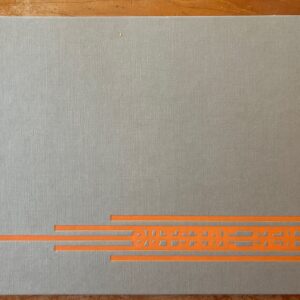JTF (just the facts): A total of 40 black and white photographs, displayed in black mounts in black cases and/or in glass vitrines, on view in two gallery rooms and the entry area on the first floor of the museum. The contact prints being exhibited were made in 1994 from the original negatives (1887-1902). The show also includes a large selection of books, letters, brochures/pamphlets, petitions, magazine spreads, Riis’ cameras/projectors, and other ephemera, as well as a map of Manhattan with various images tied to specific locations. A handful of photographs by other makers (Underwood & Underwood, Jessie Tarbox Beals, Lewis Hine, and others) are also on view, as is a reproduced slide lecture by Riis, complete with voiceover. The exhibit was curated by Bonnie Yochelson. In conjunction with the exhibit, a comprehensive catalog of Riis’ imagery has been published by Yale University Press, MCNY, and the Library of Congress (here). (Installation shots below.)
Comments/Context: At a time when income equality and immigration are two of the hot button issues in the current presidential elections here in America, the historical context provided by this retrospective of the life and work of Jacob Riis is particularly resonant – it’s a timely reminder that versions of these same fundamental concerns have been with us for a very long time.
For those who would seek to give voice to the overlooked, exploited, and unrepresented, Riis provides a compelling example of a tireless social reformer who boldly documented the real life struggles of late 19th century urban poverty and tenement living. And while we might be used to primarily thinking of Riis as a photographer, this exhibit broadens our view of his efforts to include virtually all the available media of the time. To reach his audience and insistently make his case for change, he embraced printed matter and image reproduction in countless forms (including books, newspapers, magazines, and pamphlets) and notably delivered slide lectures as compellingly entertaining as any stump speech or TED talk. The point being made here is that Jacob Riis was much more than just a man with a camera – he was a relentless storyteller and publicist, using early photojournalism as a platform for a zealously energetic brand of social evangelism.
But of course, photojournalism didn’t entirely exist at that point in the 1890s, so Riis can certainly claim some credit for pushing photography into places it had rarely gone before. Many of Riis best pictures bear the hallmarks of intense (and often unexpected) flash in a darkened room, where faces and poses are captured without much of a chance to compose themselves, leading to a harsh sense of grimly unadorned authenticity. Riis found dirty tenement lodging houses packed to the point of overcrowding, with men and women alike sleeping in jumbled piles and under tables. He documented multi-generational families living in a single room, with bundles and barrels making do as sparse furnishings or work tables placed right next to beds for sweatshop sewing and piecework. And he followed his nose to the low ceilinged cellar dive bars and opium dens that provided a dangerous momentary escape from the drudgery.
Outside on the sidewalks, Riis (and those carrying cameras on his behalf) captured a dispiriting range of poverty and social decay. Looking down narrow alleys, he saw rickety construction and billows of laundry hung across the gaps between buildings. Street gangs, tramps, and other unemployed men lingered on the margins, finding work rag picking or living in the tiny covered space under the dump. Homeless kids roamed the streets, falling into tender sleeping piles on top of iron grates, and hopelessly young children tended babies, the adults nowhere to be seen.
Each individual picture is an indictment of sorts, a piece of visual evidence that led to an argument about a whole range of social issues and injustices: labor/working conditions, unsafe and unsanitary living conditions, unemployment, child labor, homelessness, orphans, childhood education, discrimination against immigrants, the list goes on and on. And the astonishing array of media that surrounds the pictures in this exhibit (vitrine after vitrine) shows just how far Riis leveraged the power of his photographs. Not only did his pictures take the form of now famous photobooks (How the Other Half Lives, The Children of the Poor etc.), they were then multiplied out in alternate forms (as drawings/woodcuts and halftone reproductions), taking his message far and wide, across multiple decades. And one of his popular (and influential) slide lectures plays in the back room – it is a carefully choreographed parade of imagery, each picture embellished by a small anecdote or a telling detail, delivered sermon-like with equal measures of humble humor, outrage, education, and sympathy. Following along with each story and issue, Riis’ contagious passion comes through strongly.
This exhibit finds its way to an almost even balance between art and history, successfully placing the images into the larger context of Riis’ muckraking social reform and showing how that effort was variously translated into the printed page. As seen in the torrent of activity on view here, Riis was clearly an innovative and indefatigable advocate, creatively using new forms of communication to gain support for his ideas and give voice to those who had been forgotten.
With the passing of time, we now see many of Riis photographs as icons of engaged photojournalism. He likely saw them differently, as more of a means to an end rather than the end itself. These photographs offered Riis a new vocabulary that could be persuasively used to convince those who weren’t paying attention that his issues were harrowingly and humanly real, and with addition of his stubborn energy, he leveraged them farther and to more good than any of us would have ever expected.
Collector’s POV: Since this is a museum show, there are of course, no posted prices. Very few (if any) of Riis’ vintage prints are to be found in the secondary markets, and while some posthumous prints were made in 1947 (Alexander Alland) and again in the late 1950s/early 1960s (Rolf Petersen), these seldom find their way to auction as well (even though prices have stayed reasonable, often under $2000).


















